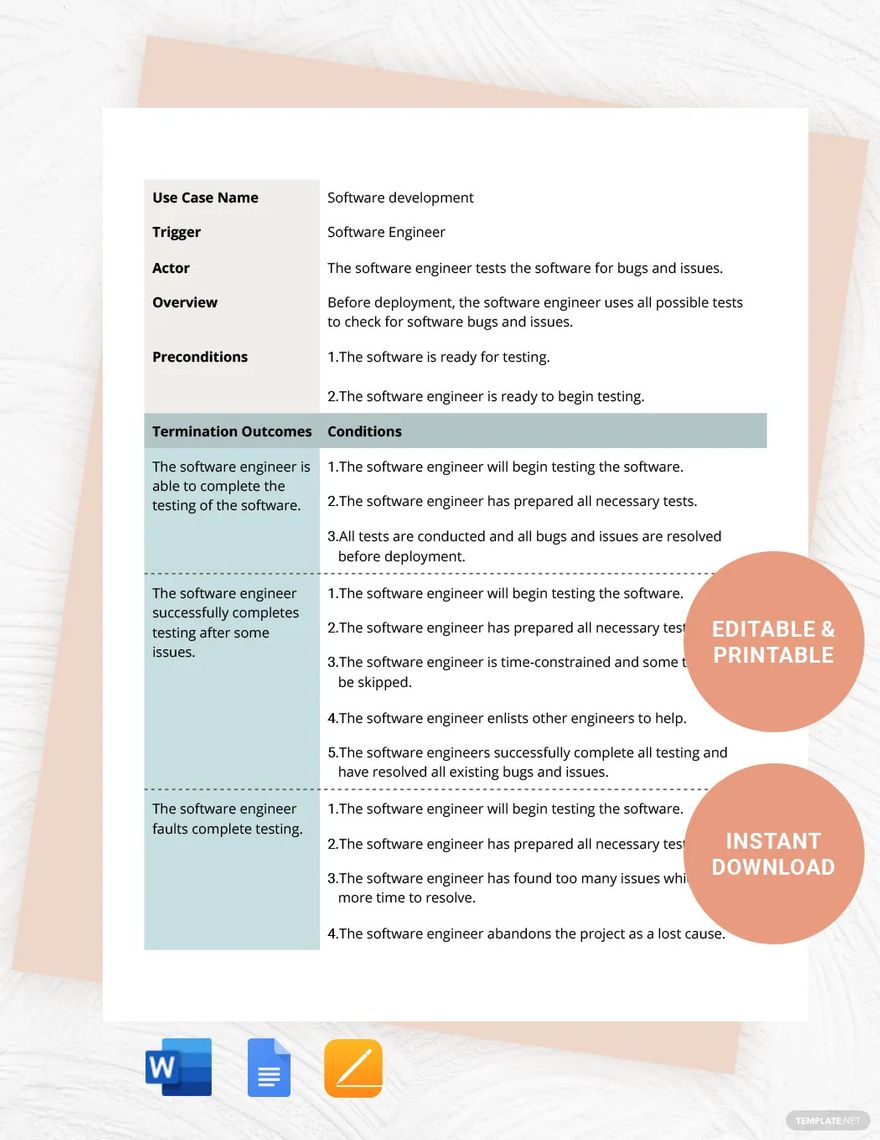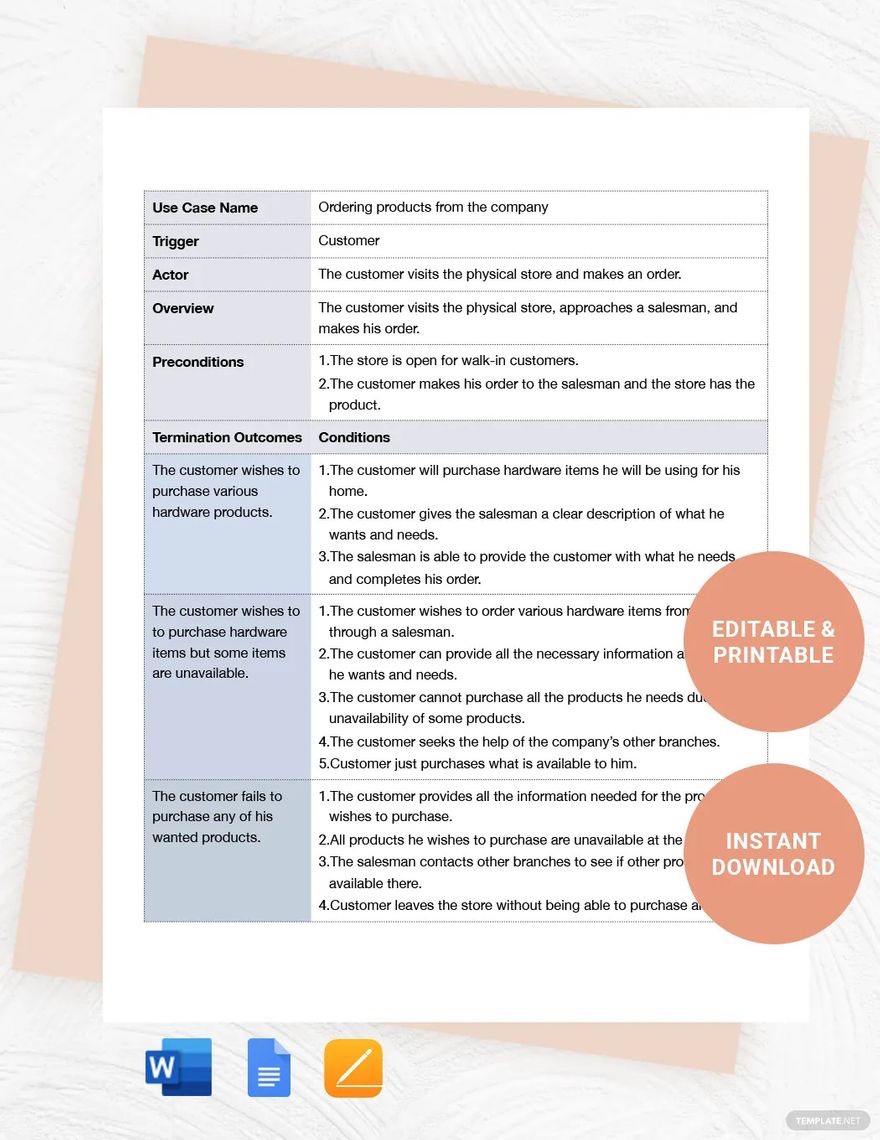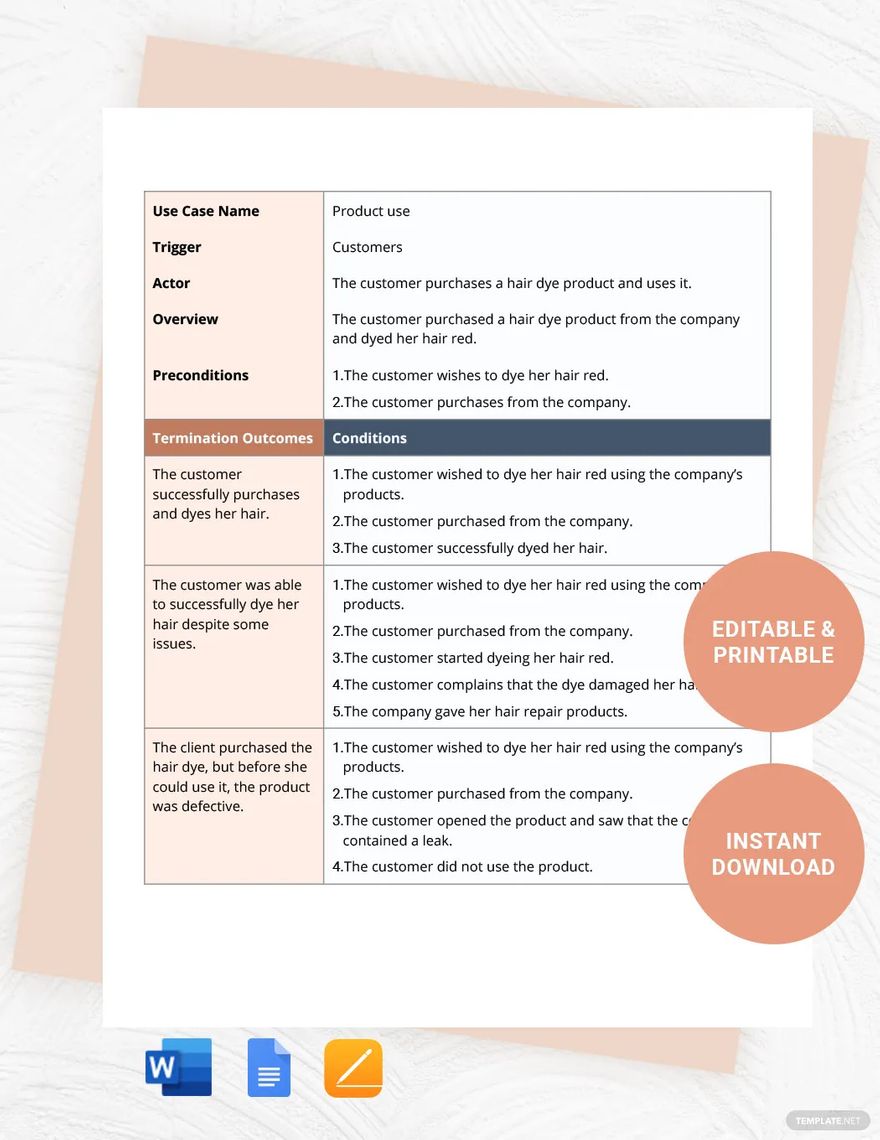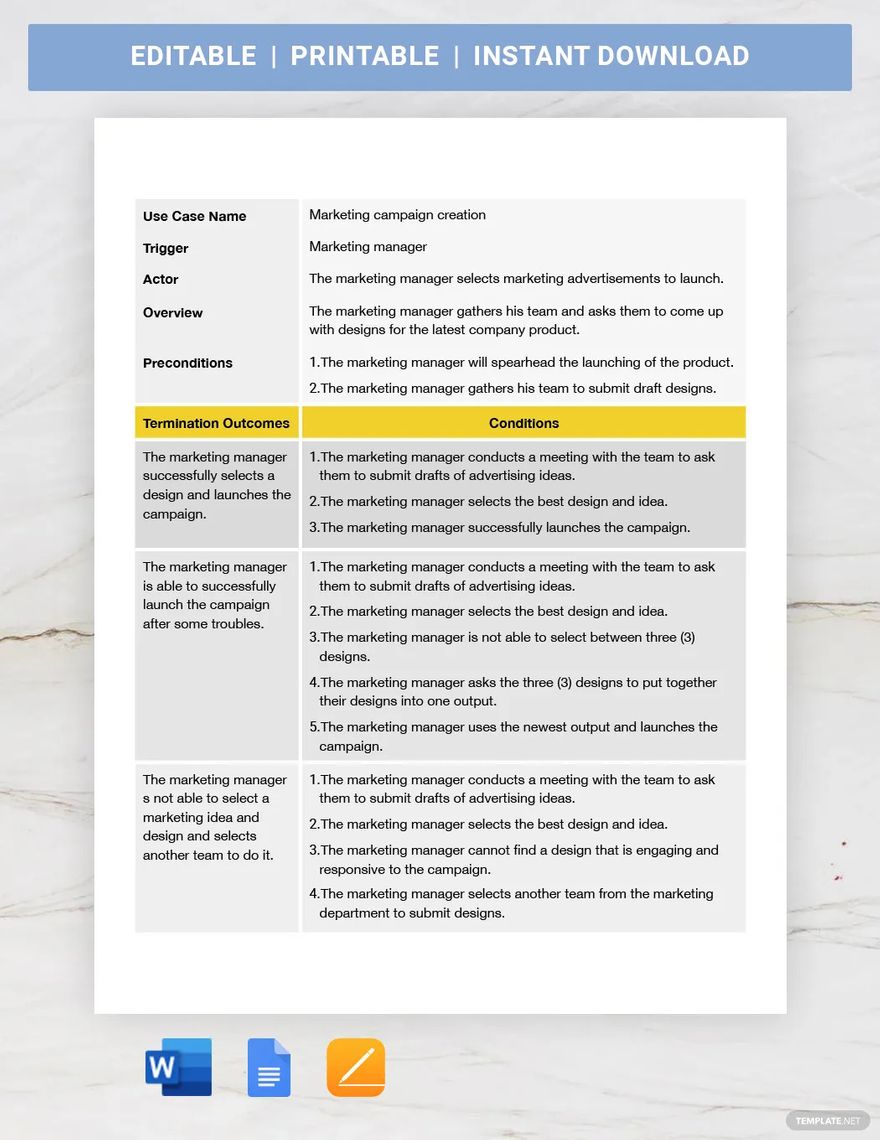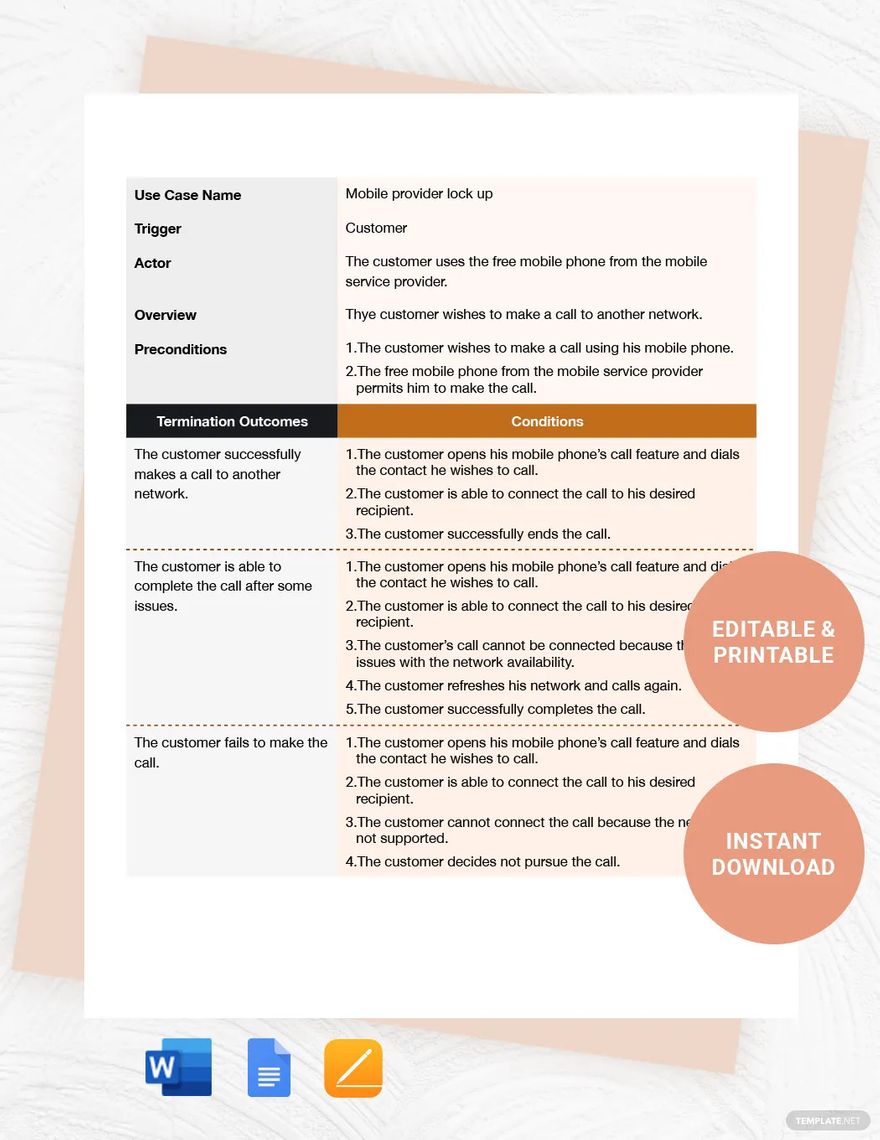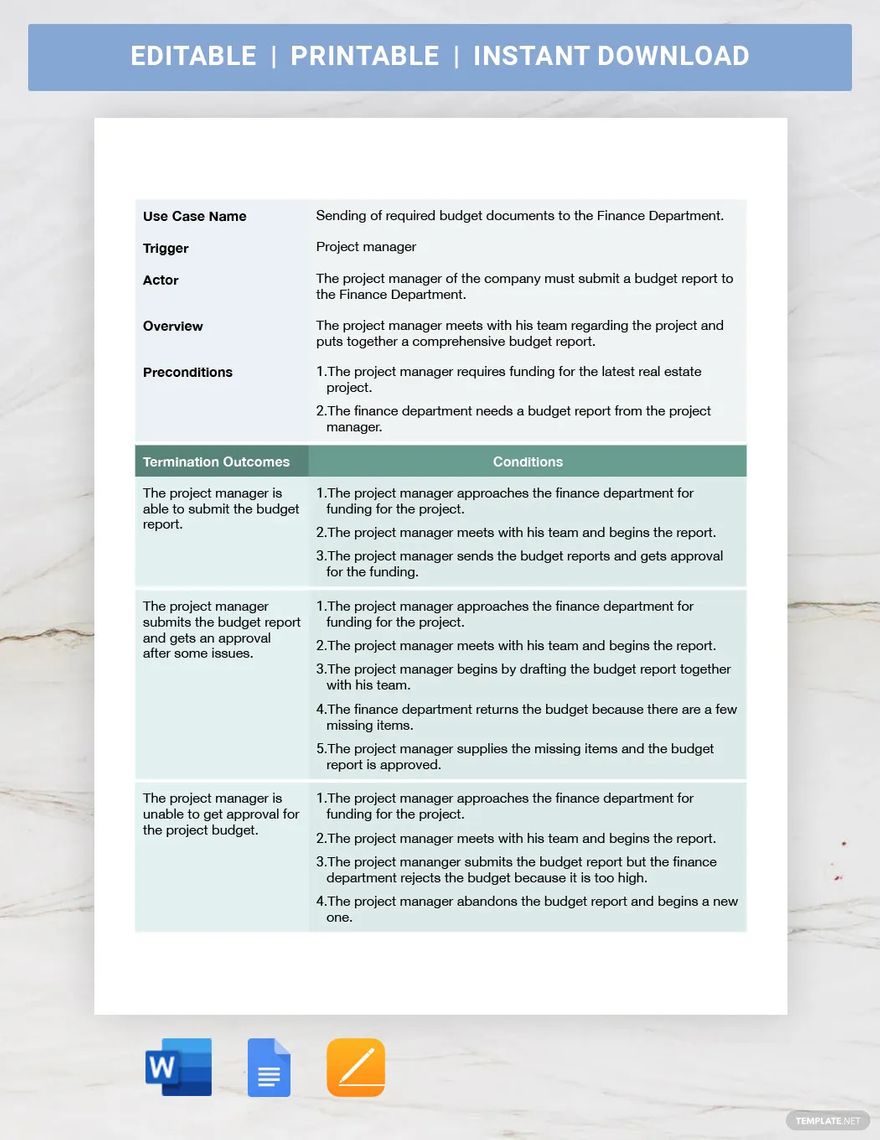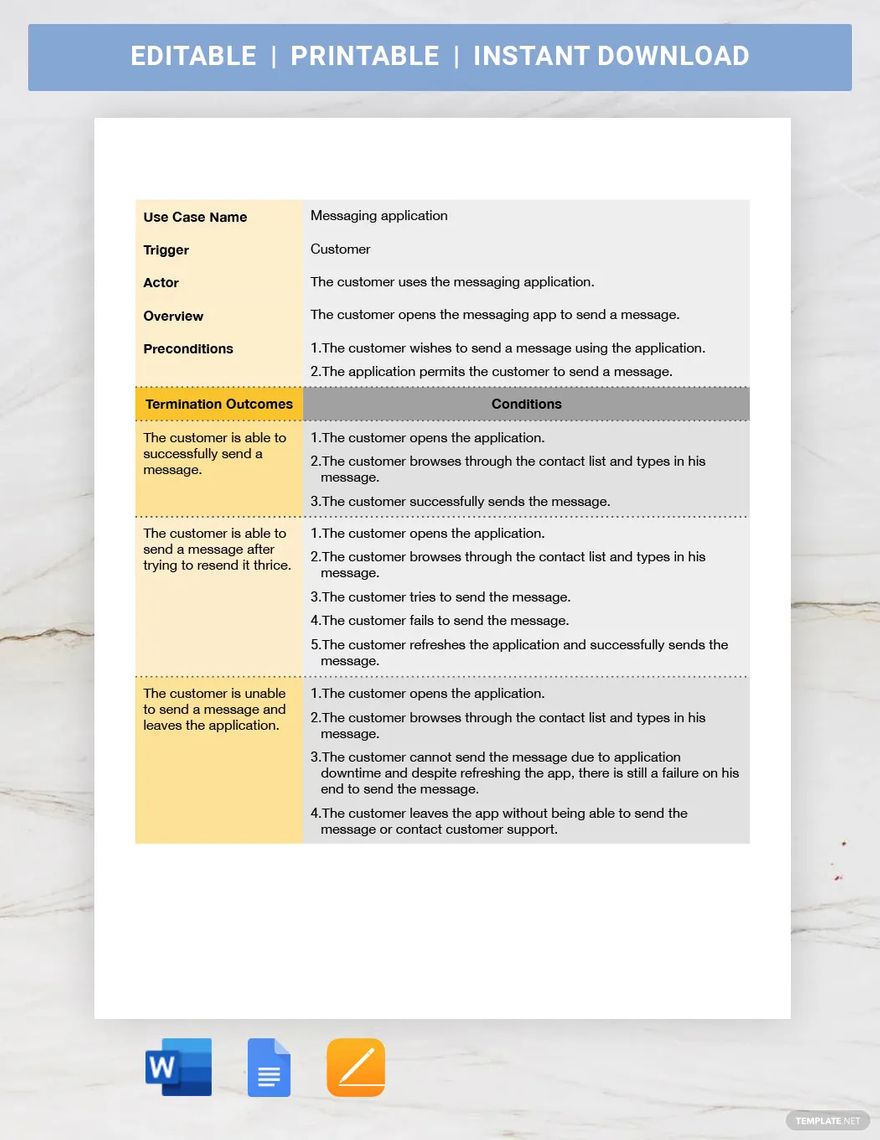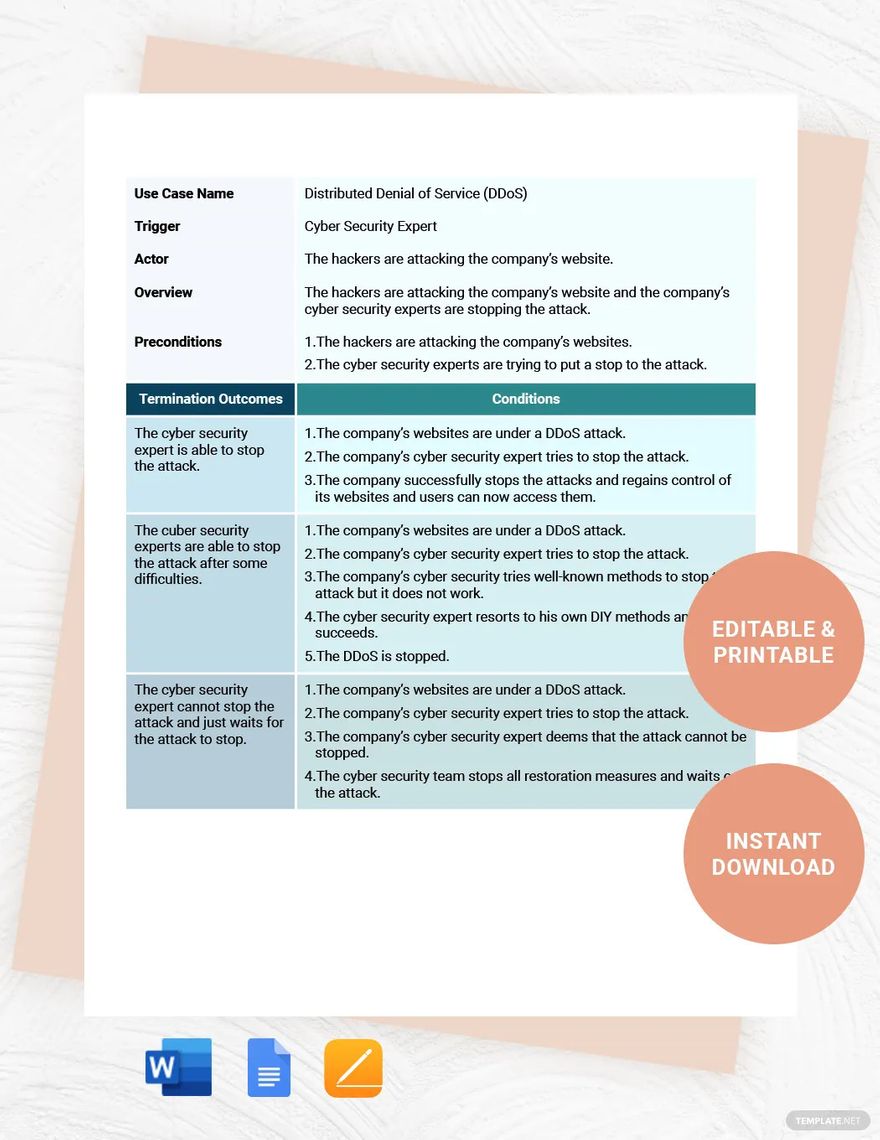Table of Contents
- Use Case Definition & Meaning
- What Is a Use Case?
- 10 Types Of Use Case
- Use Case Uses, Purpose, Importance
- What’s in a Use Case? Parts?
- How to Design a Use Case?
- Use Case vs. User Story
- What’s the Difference Between Use Case, Test Case, and Scenario?
- Use Case sizes
- Use Case Ideas & Examples
- FAQs
- More in Use Case
Use Case
Use cases are written descriptions of how users will perform tasks on a website. Using use cases explains how a system should behave and identifies what could go wrong during the process, which adds value to the website.
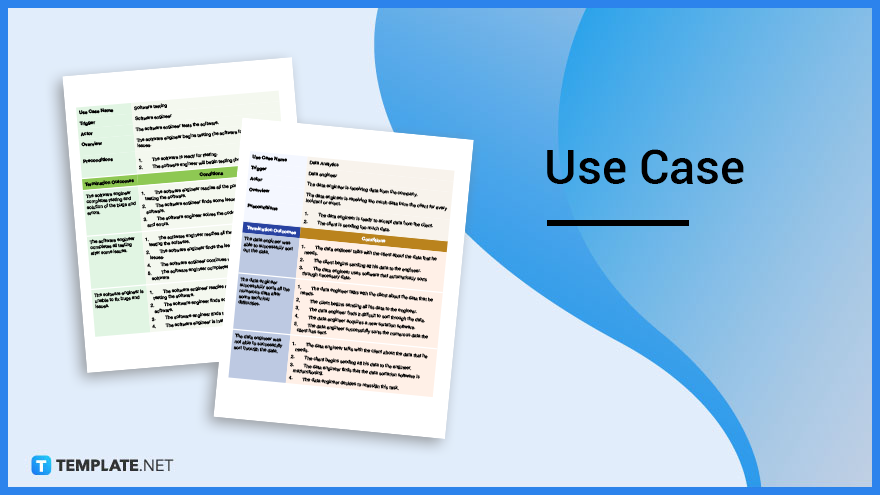
Download the Free Use Case Article in PDF
File Format:
Use Case Definition & Meaning
Use cases are descriptions of how a person who uses a process or a system will accomplish an objective and are usually associated with software systems or can be used as a reference to any process.
Use cases outline a system’s behavior from a user’s point of view as it responds to a request and is represented as a sequence of simple steps.
What Is a Use Case?
A use case is a description of ways in which a user interacts with a system or product. It provides a model diagram that visually represents how a product’s user interacts with the product and how the product behaves. A use case is a methodology that describes each scenario between systems and users in a certain environment.
10 Types Of Use Case
Software Use Case
A software use case contains the use case name, trigger, actor, overview, preconditions, termination outcomes, and its conditions. It also contains the overall scope and content of the software. Writing a software use case, identify first who is the target user, define what a user wants to do on the site, decide the normal course of events, and describe the basic course in the description for the use case.
Business Use Case
A business use case is developed to document business services and processes that show the relationship between any factor that interacts with the organization or actor and a certain business function. It is a sequence of actions performed in a business that produces a result of observable value to an actor of the business. It is also used to determine how a user can make use of a business to accomplish their expected results.
Website Use Case
A website use case is a description of how users will perform their tasks on the website. It is represented as a sequence of actions that begins with a user’s goal and ends when the goal is achieved. It also provides a layout of how a website’s system will behave as it responds to requests from users.
Product Use Case
Product use cases are often used by product managers to explain how and why customers use various features of a product. It shows possible scenarios that show how a user might interact with a product to achieve their goal. Product use cases vary depending on the reasons why customers buy the same product.
Marketing Use Case
Marketing use cases demonstrate the interaction between the end user and a product or service. These demonstrations allow businesses to convey benefits to customers in a marketing presentation. Marketing platforms use these use cases to measure the potential usage of their product or service.
Technology Use Case
Technology use cases are terms used in software and system engineering that describes how the user utilizes a system to accomplish a task. It acts as a software modeling technique that features to be implemented and resolutions of errors that may occur. It contains the actors, system, and goals which are the basic elements of a use case.
Requirement Use Case
Requirement use cases describe the interactions between an actor and the system including what the actor does and how the system reacts. It must contain clear descriptions of the criteria and accurate, realistic, and essential details. These use cases are used to identify, clarify, and organize system requirements.
Customer Use Case
A customer use case describes all the possible scenarios in which a user and the system would interact with each other to achieve a goal. It helps businesses understand their customers’ behavior which enables them to design algorithms of automated systems that will interact with customers. It also covers all possible scenarios that can cause error along with the system’s response to it.
Security Use Case
A security use case is an attack scenario that a security control, policy, or guideline is intended to prevent or mitigate. These attacks include phishing, credential dumping, and browser hijacking. Security use cases can be detecting employee or insider threats, monitoring privileged account access, hunting for threats, and more.
Data Use Case
Data use case is used by businesses to gather insights to answer business questions for better decision making. To write a data use case, identify first the objectives, ownership, outcomes, and optimal library. Once formalized, prioritization of the use case base on rewards and risks is next.
Use Case Uses, Purpose, Importance
Uses case is a methodology used by system developers to describe how users perform tasks in an application. It also provides a list of goals that can be used to establish the cost and complexity of a system. Using a use case diagram describes the high-level functions and scope of the system while identifying the interactions between the system and its actors.
Improves Communication Among Team Members
Use cases provide an archive of team members’ business knowledge as they describe each business process. It can be in a form of a write that contains valuable discussion within the team. Using use cases enables teams to capture perspectives while identifying related business goals, conditions, and issues.
Encourages a Common Ground on System Requirements
Writing a use case enable stakeholders to align descriptions with the details of an existing process. It serves as a foothold on various and complex business processes in the industry. It helps stakeholders to reach a common agreement on best practices and improved processes for both the management and colleagues.
Helps Analysis Teams to Prioritize
Analysis teams can prioritize development work by creating a catalog of the use case titles and arranging them in proper order. This helps them decide if a project falls outside the scope or if it is needed during the first project phase. It also gives stakeholders an opportunity to identify which functions they need most.
Helps the Development Team Understand the Business Process
Use cases provide clear and concise information that developers can easily understand. It also contains valuable perspectives on the stakeholder’s business goals, assumptions, and operational rules. Uses cases also provide developers with a foundation for developing affordable solutions to business challenges.
Ensures that Delivered Software Works Properly
Use cases can be used to obtain test cases by providing source materials for a test case’s information fields. Test cases are performed by the QA to ensure that a certain feature within a software works properly according to its functionality. Use cases are used as a source for writing comprehensive end-to-end test scripts.
What’s in a Use Case? Parts?
Brief Description
The brief description contains one or two sentences that describe the use case which includes the explanation of its functionality from the user’s perspective.
Actors
This part of the use case contains the names of the actors who participated in the use case which can be a person, another system, or an organization.
Pre-conditions
Pre-conditions are the phases of the system and its environment that are required before performing a use case.
Basic Flow
The basic flow is a scenario that describes the interaction between actors and individual use cases and focuses on defining how a system works.
Alternative Flow
An alternative flow refers to a particular step of the basic flow and resolves its non-standard behavior which is faults or errors either made by the user or the system.
Post-conditions
Post-conditions are lists of possible scenarios that the system can be in after running a use case and states actions that the system performs at the end of the use case.
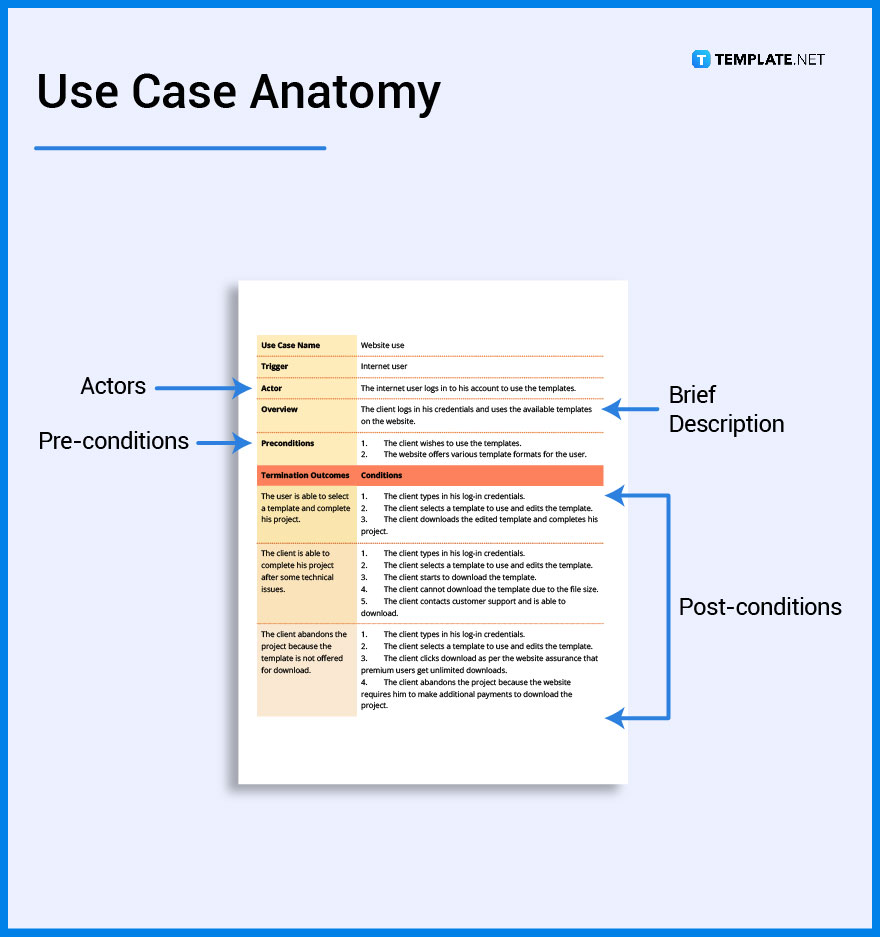
How to Design a Use Case?
1. Choose a use case size.
2. Decide on the purpose of the use case.
3. Select a use case template.
4. Modify the structure of the use case template by adding important fields such as actors, systems, and goals.
5. Include additional preconditions if you have any.
6. Finalize and download it for printing.
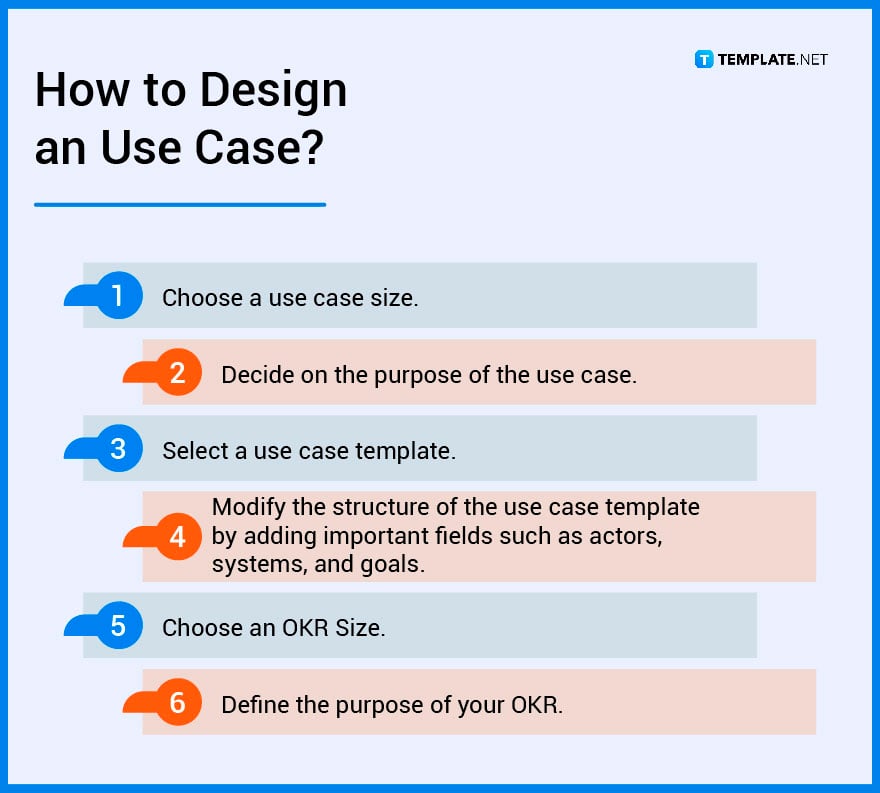
Use Case vs. User Story
Use cases are written documents that describe how users will perform tasks within a website or software to achieve their goals.
User stories are informal and general explanations of a software feature and help in understanding why users want a certain functionality.
What’s the Difference Between Use Case, Test Case, and Scenario?
Use cases are descriptions of how a person actually uses the process or system will accomplish a goal and are usually used as a tool to capture the functional requirements of a system.
Test cases are a set of actions performed on a system to determine if its features satisfy software requirements and functions according to its design.
Scenarios are tools used during requirements analysis to describe a specific use of a proposed system and capture the system as viewed from the outside.
Use Case sizes
Use case sizes vary depending on how much information it must have like the use case’s description, overview, and conditions.
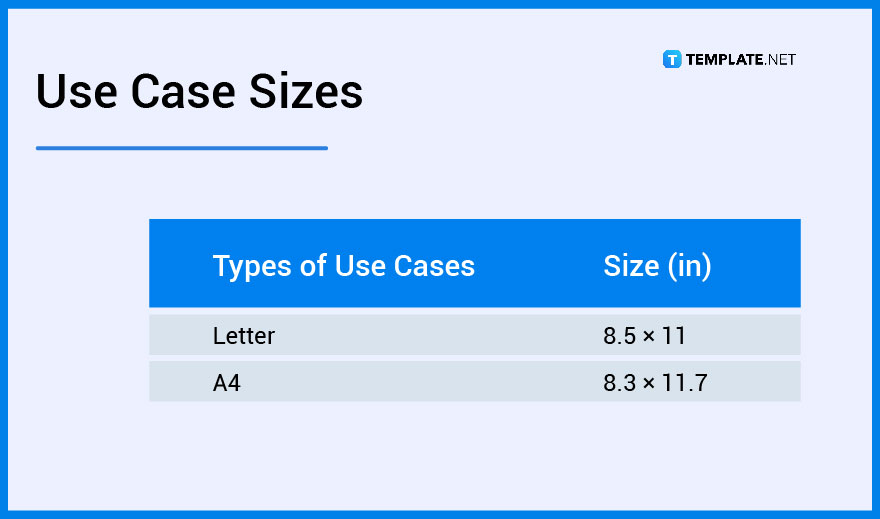
Use Case Ideas & Examples
Use case ideas for documents must provide clear and concise information on each actor, goal, and system which is the basic element in composing a use case.
- Use Case Ideas and Examples
- Functional Use Case Ideas and Examples
- Data Analytics Use Case Ideas and Examples
- Visio Use Case Ideas and Examples
- Project Use Case Ideas and Examples
- App Use Case Ideas and Examples
- Agile Use Case Ideas and Examples
- Test Use Case Ideas and Examples
- Blank Use Case Ideas and Examples
- Modern Use Case Ideas and Examples
- Formal Use Case Ideas and Examples
FAQs
Why do we need use cases?
Use cases are used in software development because they can help explain how a system should function while identifying features that need fixing.
What are business rules for use cases?
Business rules for use cases include Buried Business Rules, Dangling Business Rules, Positioned Business Roles, Anchored Business Rules, Grouped Business Rules, and Modeled Business Rules.
What are the functional requirements in the use case?
Functional requirements in use cases are a set of requirements that are mostly in a form of text that defines the system functionality being developed, which includes business rules, transaction corrections, adjustments, and cancellations, administrative functions, authentication, authorization levels, audit tracking, external interfaces, and certification requirements.
What is a use case in the project?
In a software or system project, a use case is a list of actions or steps of events that usually defines the interactions between a role, which can be a human, an external system, or time, and a system to achieve a goal.
How do you write a use case?
To write a use case, define its purpose and scope including a goal statement, stakeholders, and what is included in the scope, write the steps of the use case including its elements, how the user will use the process, and the normal course of events, and then write valuable use cases by capturing a business process.
What is the purpose of use cases?
The purpose of use cases is to describe a function a user will perform using the target system.
What should be included in a use case?
Use cases should include three essential elements which are the Actor, the Goal, and the System.
What are the actors in use case diagrams?
Actors are external entities that interact with the system and represent roles that may include human users, external hardware, or other systems.
What are two important components of the use case?
The two important components of a use case are the Actor and the System which are essential to define the correct functionality of a software application.
Why is use case modeling useful in analysis?
Use case modeling is used in modern software development methods as an approach for describing a system’s software requirements.
More in Use Case





